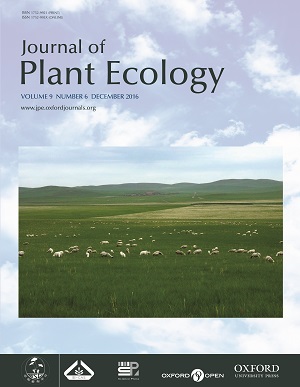Current Issue
-
 Volume 9 Issue 6
Volume 9 Issue 6
In the semiarid grassland of the Xilin River basin, China, Ren et al. conducted a six-year grazing experiment in this typical steppe along with seven grazing intensity (from stocking rate 0 to 9 sheep per hectare), to examine the grazing effects on species nutrition and community dynamic. Photo taken by Haiyan Ren.
IF: 3.9
CiteScore: 5.7
CiteScore: 5.7
Editors-in-Chief
Yuanhe Yang
Bernhard Schmid
Yuanhe Yang
Bernhard Schmid
CN 10-1172/Q
ISSN 1752-9921(print)
ISSN 1752-993X(online)
ISSN 1752-9921(print)
ISSN 1752-993X(online)







